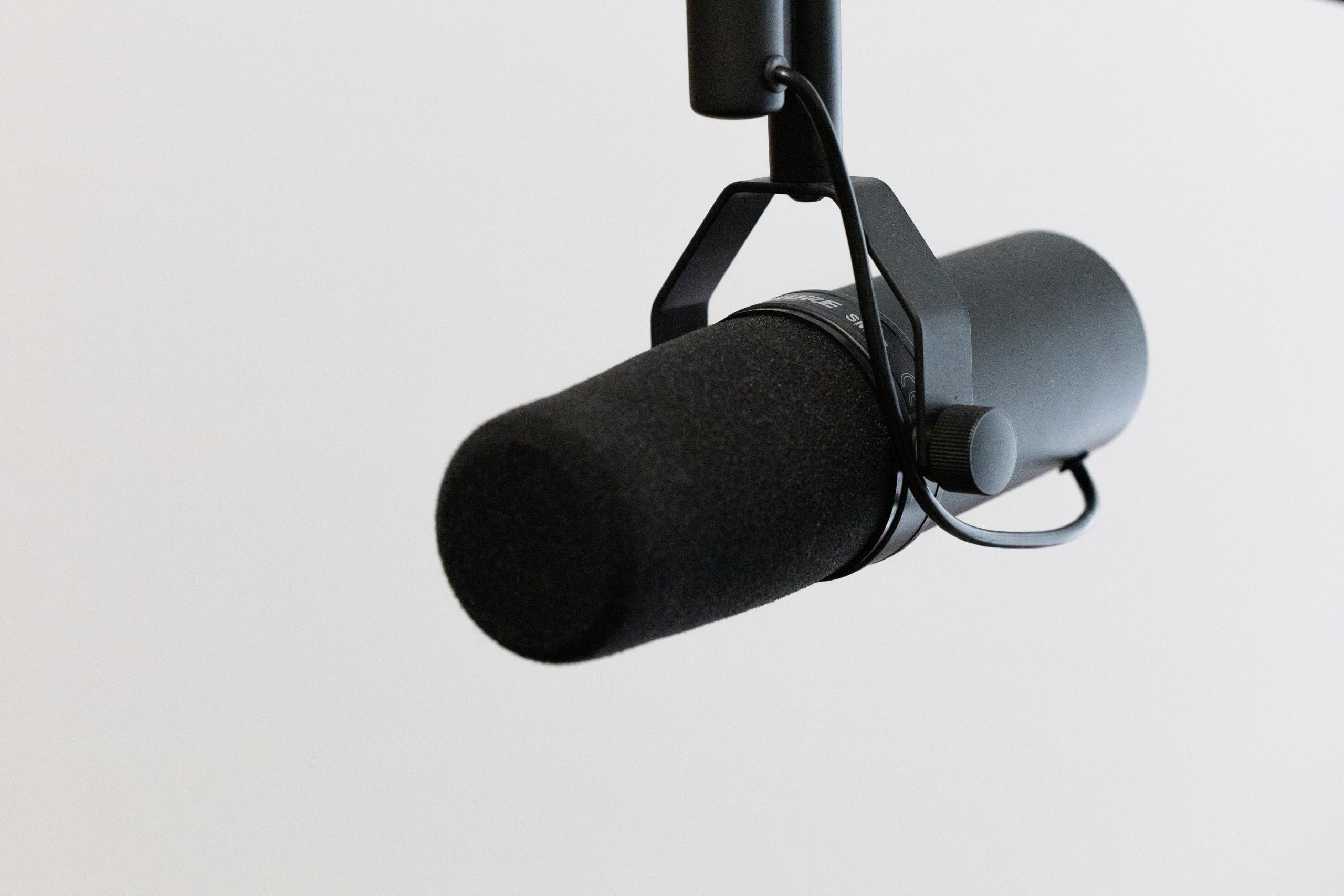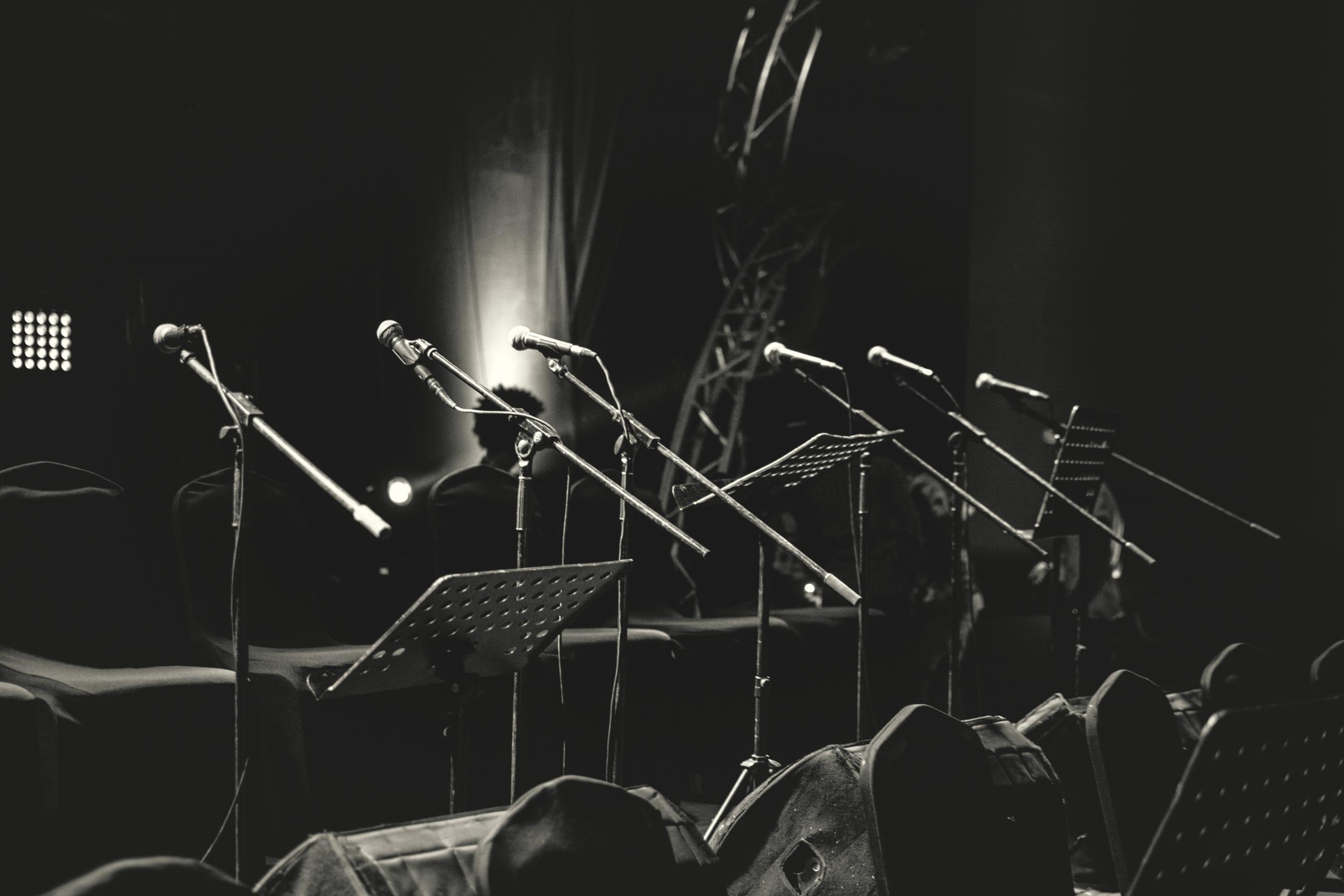Though the basic principle of microphones is more or less the same, there are a few variations in how mics work. A simple search on a music equipment site shows that there are many different types of microphones and that prices can vary wildly.
Manufacturers offer different microphones for different purposes and while there are some great microphones for recording, there are also sage microphones (these tend to be more durable) and even modern variations like USB microphones.
In this guide, we’re matching up some of the different requirements from microphones with the types of microphones and answering many of your questions. How does a microphone work?

How Do Microphones Work?
A microphone is able to detect sounds and turns them into electrical signals. It works in a similar way to how your ears hear sounds and send signals to your brain.
Inside the microphone, there's a small part called a diaphragm, which is like a sensitive piece of material, usually Mylar plastic, that moves when it “hears” the sounds. When you speak or make any noise near the microphone, the diaphragm starts moving too.
When the diaphragm moves, it influences the electrical signal inside the microphone. The microphone then converts and sends these electrical signals to a device, like a speaker or a computer, which can turn those signals back into sound that we can hear.
So, the microphone acts as an interpreter for sounds. It listens to the audio, turns it into electrical signals, and then sends those signals to another device to recreate the sounds for us to hear clearly.
These are the very basics, but there are different types of microphones that work in slightly different ways and produce different results. Some are more rugged and durable but don’t provide as much detail, some need power in order to function, and some use other materials.
XLR or USB Microphones?

Before we delve into the exact categories of microphones, it is worth explaining the difference between XLR and USB mics.
USB and XLR are the two main types of different types of connectors used in microphones, and they have some key differences
USB microphones have a built-in USB connector, which means they can be directly plugged into a computer or other USB-enabled devices. They don't need any additional equipment or audio interfaces to work.
XLR microphones use the traditional industry-standard XLR connector, which is a three-pin connector typically found on professional audio equipment. To use an XLR microphone, you need an audio interface or a mixer with XLR inputs to convert the microphone's signal into a format that can be used by a computer or other devices. Audio interfaces are pretty inexpensive.
USB microphones are usually more straightforward and user-friendly. They are plug-and-play devices, meaning you can quickly connect them to your computer and start using them without much setup. They are excellent for podcasting, gaming, video conferencing, and other basic recording tasks. If they’re good enough, they can be used as a studio microphone, but they aren’t suitable for use in a live environment such as a concert.
XLR models are more versatile and commonly used microphones in professional audio settings like recording studios, live performances, and broadcasting. Since they require an audio interface, they provide more control over the audio quality and allow you to connect to a wide range of devices.
USB microphones are usually more convenient microphones for recording things like podcasts, as they don't require additional equipment. You can easily carry them around and use them with your laptop or other devices. XLR microphones, along with their audio interface or mixer, can be bulkier and more of a challenge to take from one place to another, making them better suited for stationary setups in a studio or stage environment.

Types of Microphones

There are a few different microphone types in the industry. When it comes to studio recording microphones and stage mics, the main categories are dynamic, condenser, and ribbon mics. These are all made in slightly different ways and have different characteristics.
Dynamic Microphones
Dynamic microphones are built to last, they’re robust and can handle high sound pressure levels, making them ideal for capturing loud and powerful sounds. They are commonly used for live performances, recording instruments like drums and electric guitars, and broadcasting purposes. Dynamic microphones are also suitable for outdoor use due to their durability. If you watch a festival gig, for instance, the singer will often be using a Shure SM58, one of the most iconic dynamic mics.
Condenser Microphones
Condenser microphones are more sensitive and responsive than dynamic microphones, making them excellent for capturing delicate and detailed sounds. They are widely used in studio recording for vocals, acoustic instruments, and as room mics. Condenser microphones are also popular in podcasting, voice-over work, and any situation where high-quality audio and detail is a priority. Vocalists with all levels of literacy and of all different styles use condenser mics for recording.
Ribbon Microphones
Ribbon microphones are known for their warm and smooth sound. They are not commonly used due to the fact that they are very easy to break, and they are certainly not used in live environments often. They can be useful for studio recording using instruments like stringed instruments, brass, and guitar amps. Ribbon microphones are also suitable for capturing natural and vintage-style audio, especially in certain music genres.
Ribbon microphones are becoming less common. They are expensive, and they break regularly. These mics can even break just by overloading them with loud sounds.
Singing lessons empower you to overcome stage fright and perform with confidence in front of any audience.
Other Examples
Though these are the main microphones that those who are interested in singing and recording instruments need to consider, there are some other types of microphones out there.
For instance, shotgun microphones. These have a very directional pickup pattern, meaning they capture sound mainly from the front and reject sounds from the sides and rear. They are commonly used in video production, filmmaking, and broadcasting to focus on a specific sound source while avoiding picking up surrounding noise.
Lavalier microphones are also popular. These tiny clip-on microphones that can be attached to clothing, usually near the collar or lapel. They are commonly used in interviews, presentations, and live performances where the speaker needs hands-free mobility.
All mics have their own different quirks and understanding types of microphones also helps to dictate techniques.
A Note on Pickup Patterns (also Called Polar Patterns)
Mics also have different pickup patterns. This determines the pattern in which the mics tend to reject some sounds and record others in detail. For instance, a lead singer at the front of a stage needs a microphone that only picks up their voice, rejecting other members of the band and the audience in front of them.
Pickup patterns are different from types of microphones, and some microphones may have different settings allowing users to choose between the pickup patterns. It could be that a microphone can be used in multiple different scenarios with different pickup patterns. Usually, they have a switch on them allowing you to choose between the patterns if this is the case.
Singing lessons pave the way for a lifelong passion, as you continually refine your singing skills and grow as an artist.
Cardioid
The cardioid pattern is heart-shaped, capturing sound mainly from the front of the microphone while rejecting sounds from the sides and rear. Cardioid microphones are versatile and widely used for various applications. They are excellent for recording a single sound source directly in front of the microphone, making them ideal for vocals, solo instruments, and podcasting.
Omni-directional
Omni-directional microphones are designed to capture sound equally from all directions, forming a 360-degree pattern. These microphones are suitable for capturing ambient sounds or when you want to pick up sound from all around the microphone. They are commonly used in situations like recording group discussions, recording soundscapes, or making field recordings.
Figure-of-Eight
This bi-directional pattern picks up sound from the front and rear of the microphone while rejecting sounds from the sides. Figure-of-eight microphones are often used for interviews or situations where two sound sources are present, one in front and one behind the microphone. They are also used in stereo microphone setups.
This is one of the most important aspects of choosing a microphone for recording. Understanding the pickup patterns of microphones is crucial because it allows you to control what the microphone hears and rejects. Choosing the right pickup pattern for your specific recording needs can significantly impact the audio quality and overall effectiveness of the recording.
Avail of singing lessons to discover your unique vocal style and develop your own signature sound.
There are some more pickup patterns to understand, too:
Conclusion: Choosing the Right Microphone
Understanding the different types of microphones is a way to ensure that you can make the right choice.
If you’re just looking to record a rough demo of some vocals at home then you might choose to use a USB microphone with a cardioid setup. Make sure you warm up as a vocalist and do everything you can to prevent fatigue. If you want to make a field recording then you may opt for an omnidirectional mic. For the most possible detail on an instrument you might go for a condenser mic.
The choice of microphone will always be dictated by the end results you’re looking for. Make sure you’ve understood these types of mic and what each of them can do for your recording needs.















